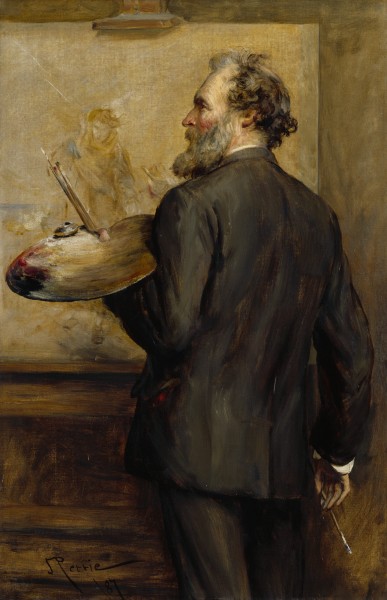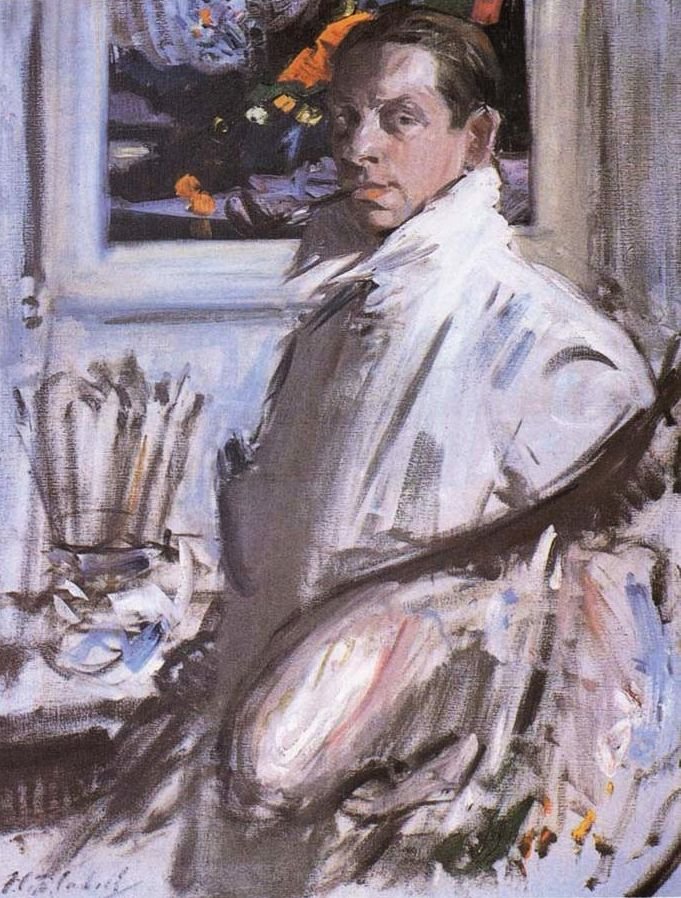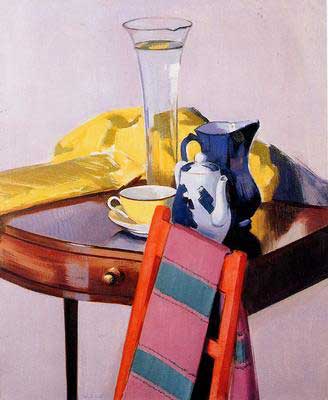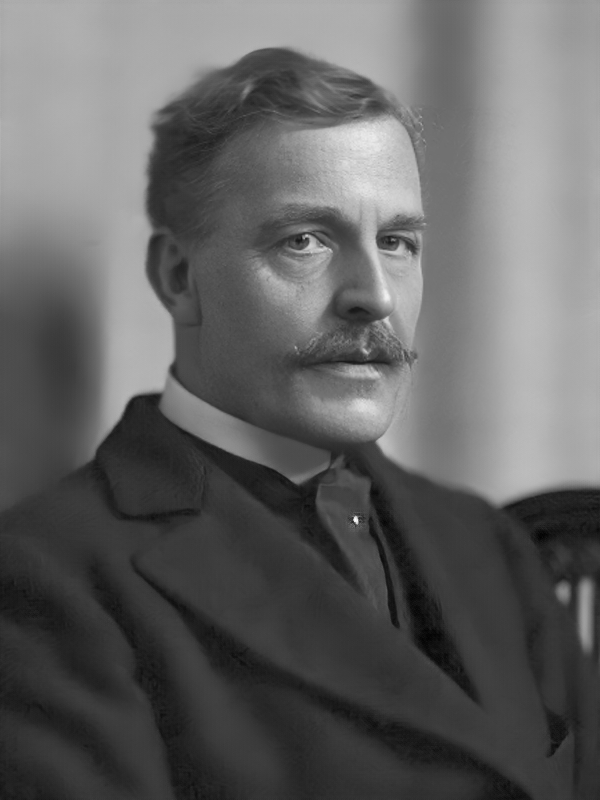|
Fleming Collection
The Fleming Collection is a large private collection of Scottish art. Originally a corporate collection dominating the walls of the Flemings bank, it had a home in a gallery on Berkeley Square, central London, England from 2002 until the gallery's closure in 2016. It now operates as a loaning and touring collection. Origins The collection began in 1968 at the instigation of the Scottish banking firm Robert Fleming & Co., founded in Dundee, Scotland. In 1968 the bank moved to a new building in Corsby Square in the City of London and art began to be bought for the purpose of decorating the space. The task of directing the art purchasing was given singularly to one of the bank's directors, David Donald. The only guideline given was that the paintings should be by Scottish artists or of Scottish scenes by any artists, to emphasise the bank's proud Scottish origins. Scottish art was largely unknown outside Scotland until the 1980s, making prices relatively low, meaning that a large ... [...More Info...] [...Related Items...] OR: [Wikipedia] [Google] [Baidu] |
Private Collection
A private collection is a privately owned collection of works (usually artworks) or valuable items. In a museum or art gallery context, the term signifies that a certain work is not owned by that institution, but is on loan from an individual or organization, either for temporary exhibition or for the long term. This source is usually an art collector, although it could also be a school, church, bank, or some other company or organization. By contrast, collectors of books, even if they collect for aesthetic reasons (fine bookbindings or illuminated manuscripts for example), are called bibliophiles, and their collections are typically referred to as libraries. History Art collecting was common among the wealthy in the Ancient World in both Europe and East Asia, and in the Middle Ages, but developed in its modern form during the Renaissance and continues to the present day. The Royal collections of most countries were originally the grandest of private collections but are no ... [...More Info...] [...Related Items...] OR: [Wikipedia] [Google] [Baidu] |
Thomas Faed
Thomas Faed RSA (1826–1900) was a Scottish painter who is said to have done for Scottish art what Robert Burns did for Scottish song. Life Faed was born on 8 June 1826, at Barlay Mill in Gatehouse of Fleet, Kirkcudbrightshire, and was the brother of the artists James Faed, John Faed and Susan Faed. He received his art education in the school of design, Edinburgh and was elected an associate of the Royal Scottish Academy in 1849. He went to London three years later, was elected an associate of the Royal Academy in 1861, and academician in 1864, and retired in 1893. He had much success as a painter of domestic genre, and had considerable executive capacity. In 1850 he was living at 16 Comely Bank in north Edinburgh with his brother James Faed, an engraver. During his time in Edinburgh he was a member of the Edinburgh Smashers Club alongside William Fettes Douglas. Three of his pictures, ''The Silken Gown'', ''Faults on Both Sides'', and ''The Highland Mother'' are in ... [...More Info...] [...Related Items...] OR: [Wikipedia] [Google] [Baidu] |
James Cowie (artist)
James Cowie (16 May 1886 – 18 April 1956) was a Scottish painter and teacher. The quality of his portrait paintings and his strong linear style made him among the most individual Scottish painters of the 1920s and 1930s. His work displayed meticulous draughtsmanship which was based on his studies of the Old Masters and his use of many preparatory drawings. Life and work Cowie was born on a farm in Cuminestown, Aberdeenshire into a family of non-conformist farmers. After attending Fraserburgh Academy he studied English literature at Aberdeen University but failed to graduate. After obtaining a teacher training qualification in drawing, from the United Free Church Training College, he took a teaching position at Fraserburgh Academy in 1909. He resigned this post to enroll at the Glasgow School of Art, where he completed his Diploma in two years between 1912 and 1914. Shortly before the start of the First World War, Cowie was appointed art master at Bellshill Academy near G ... [...More Info...] [...Related Items...] OR: [Wikipedia] [Google] [Baidu] |
Francis Campbell Boileau Cadell
Francis Campbell Boileau Cadell RSA (12 April 1883 – 6 December 1937) was a Scottish Colourist painter, renowned for his depictions of the elegant New Town interiors of his native Edinburgh, and for his work on Iona. From October 2011 - March 2012 the Scottish National Gallery of Modern Art held a major solo retrospective of Cadell's work, the first since that held at the National Gallery of Scotland in 1942. Life and work Francis Cadell (pronounced "Caddle") was born in Edinburgh, the son of Dr Francis Cadell FRCSE (1844-1909), a wealthy surgeon and his wife, Mary Hamilton Boileau (1853-1907). His childhood home was at 22 Ainslie Place on Edinburgh's prestigious Moray Estate, and he was educated privately at the Edinburgh Academy. His sister was Jean Cadell a well-known actress. From the age of 16 he studied in Paris at the Académie Julian, where he was in contact with the French avant-garde of the day. While in France, his exposure to work by the early Fauvists, and ... [...More Info...] [...Related Items...] OR: [Wikipedia] [Google] [Baidu] |
George Leslie Hunter
George Leslie Hunter (7 August 1877 – 7 December 1931) was a Scottish painter, regarded as one of the four artists of the Scottish Colourists group of painters. Christened simply George Hunter, he adopted the name Leslie in San Francisco, and Leslie Hunter became his professional name. Showing an aptitude for drawing at an early age, he was largely self-taught, receiving only elementary painting lessons from a family acquaintance. He spent fourteen years from the age of fifteen in the US, mainly in California. Hunter made an extended trip to Scotland, Paris and New York from 1903–1905. In 1906 he left San Francisco and returned to Scotland, painting and drawing there, notably in Fife and at Loch Lomond. Subsequently he travelled widely in Europe, especially in the South of France, but also in the Netherlands, the Pas de Calais and Italy. He also returned to New York in 1924 and 1928–1929. Hunter painted a variety of still-lifes, landscapes and portraits, and his painting ... [...More Info...] [...Related Items...] OR: [Wikipedia] [Google] [Baidu] |
John Duncan Fergusson
John Duncan Fergusson (9 March 1874 – 30 January 1961) was a Scottish artist and sculptor, regarded as one of the major artists of the Scottish Colourists school of painting. Early life Fergusson was born in Leith, Edinburgh, the first of four children. Although he briefly trained as a ship's doctor, naval surgeon, Fergusson soon realised that his vocation was painting and he enrolled at the Trustees Academy, an Edinburgh-based art school. He rapidly became disenchanted with the rigid teaching style, however, and elected to teach himself to paint. To this end, he began to travel to Morocco, Spain and France, where he became acquainted with other artists of the day. Amongst them was Samuel Peploe, another of the group of artists who would later become identified as the Scottish Colourists. Painting career Paris In 1898, Fergusson took his first trip to Paris to study at the Louvre. He was highly influenced by the impressionism, impressionist paintings at the Salle C ... [...More Info...] [...Related Items...] OR: [Wikipedia] [Google] [Baidu] |
Samuel John Peploe
Samuel John Peploe (pronounced PEP-low; 27 January 1871 – 11 October 1935) was a Scottish Post-Impressionist painter, noted for his still life works and for being one of the group of four painters that became known as the Scottish Colourists. The other colourists were John Duncan Fergusson, Francis Cadell and Leslie Hunter. Biography Born in Edinburgh at 39 Manor Place, he was the son of a bank manager, Robert Luff Peploe (1828–1884). He left school at 14 and was initially apprenticed as a trainee lawyer to Scott, Bruce and Glover WS at 1 Hill Street in Edinburgh. Around 1889 he began studying art at the Trustees Academy in Edinburgh. Peploe studied at the Royal Scottish Academy schools from 1893 to 1894, and then at the Académie Julian and Académie Colarossi in Paris, where he shared a room with the Scottish painter Robert Brough. He visited the Netherlands in 1895, returning with reproductions of work by Rembrandt and Frans Hals. From 1901, he undertook painting tr ... [...More Info...] [...Related Items...] OR: [Wikipedia] [Google] [Baidu] |
Scottish Colourists
The Scottish Colourists were a group of four painters, three from Edinburgh, whose Post-Impressionist work, though not universally recognised initially, came to have a formative influence on contemporary Scottish art and culture. The four artists, Francis Cadell, John Duncan Fergusson, Leslie Hunter and Samuel Peploe, were prolific painters spanning the turn of the twentieth century until the beginnings of World War II. While now banded as one group with a collective achievement and a common sense of British identity, it is a misnomer to believe their artwork or their painterly careers were heterogeneous. Generally however, the group shared a common interest in the artistic developments occurring in France and are shown to dabble with different styles such as Cubism, Post-Impressionism, Fauvism, and Futurism. The movement seemed to fall out of favour by the end of World War II, and did not experience a revival until the 1980s. Their works are currently held in a number of Scottis ... [...More Info...] [...Related Items...] OR: [Wikipedia] [Google] [Baidu] |
Edward Atkinson Hornel
Edward Atkinson Hornel (17 July 1864 – 1933) was a Scottish painter of landscapes, flowers, and foliage, with children. He was a cousin of James Hornell. His contemporaries in the Glasgow Boys called him Ned Hornel. Biography Hornel was born in Bacchus Marsh, Victoria, Australia, of Scottish parents, and he was brought up and lived practically all his life in Scotland after his family moved back to Kirkcudbright in 1866. He studied for three years at the art school at Edinburgh, and for two years in Antwerp under Charles Verlat. Returning from Antwerp in 1885, he met George Henry and associated himself with the Glasgow Boys. Hornel and Henry collaborated upon ''The Druids Bringing in the Mistletoe'' (1890), a procession of druidic priests bringing in the sacred mistletoe, gorgeous with polychrome and gold. The two worked side by side to achieve decorative splendor of color, Hornel boldly and freely employing texture effects produced by loading and scraping, roughening, sm ... [...More Info...] [...Related Items...] OR: [Wikipedia] [Google] [Baidu] |
Joseph Crawhall III
Joseph Crawhall (20 August 1861 – 24 May 1913) was an English artist born in Morpeth, Northumberland. Life Crawhall was the fourth child and second son of Joseph Crawhall II and Margaret Boyd. Crawhall specialised in painting animals and birds. He was born 20 August 1861 at Morpeth, Northumberland. He trained at King's College London before going to Paris to work with Aimé Morot in 1882. In the 1880s and 1890s, his work became associated with the Glasgow Boys. He was strongly influenced by the Impressionists, and his work, like theirs, was rejected by the art establishment, in his case in the form of the Royal Scottish Academy. In 1887/88 he visited Tangiers with Pollock Nisbet, Robert Alexander and Robert's son Edwin. In the 1880s he travelled throughout Morocco and Spain, abandoning oil painting and moving to watercolours with a lighter palette. In April 1894 art dealer Alexander Reid gave Crawhall his first one-man-show, at the inaugural exhibition at Reid's new ... [...More Info...] [...Related Items...] OR: [Wikipedia] [Google] [Baidu] |
Edward Arthur Walton
Edward Arthur Walton (15 April 1860 in Glanderston House, Barrhead, Renfrewshire – 18 March 1922 in Edinburgh) was a Scottish painter of landscapes and portraits, associated with the Düsseldorf school of painting. Life Edward was one of twelve children of Jackson Walton, a Manchester commission agent and a competent painter and photographer. Some of Edward's siblings were well known in their time - his brother George Henry Walton (1867–1933) was a noted architect, furniture designer and stained glass designer, Constance Walton was an acclaimed botanical painter, while Helen Walton, born 1850, was a decorative artist who studied at the Glasgow Government School of Design and was artistic mentor to the family. Walton enjoyed his art training at the Kunstakademie Düsseldorf and then at the Glasgow School of Art. He was a close friend of Joseph Crawhall III, Joseph Crawhall – Walton’s brother Richard having married Judith Crawhall in 1878 – George Henry (painter), G ... [...More Info...] [...Related Items...] OR: [Wikipedia] [Google] [Baidu] |
Sir James Guthrie
Sir James Guthrie (10 June 1859 – 6 September 1930) was a Scotland, Scottish Painting, painter, associated with the Glasgow School#The Glasgow Boys, Glasgow Boys. He is best known in his own lifetime for his portraiture, although today more generally regarded as a painter of Scottish Realism. Early life and education Guthrie was born in Greenock, the youngest son of the Rev. John Guthrie, a minister of the Evangelical Union (Scotland), Evangelical Union church, and Anne Orr. He originally enrolled at Glasgow University to study law, but in 1877 abandoned this in favour of painting. Unlike many of his contemporaries he did not study in Paris, being mostly self-taught, although he was mentored for a short time by James Drummond in Glasgow and then John Pettie in London.Biography ("Helensburgh heroes") In 1879, he ... [...More Info...] [...Related Items...] OR: [Wikipedia] [Google] [Baidu] |








